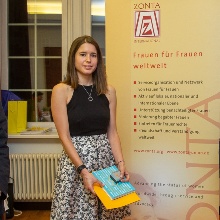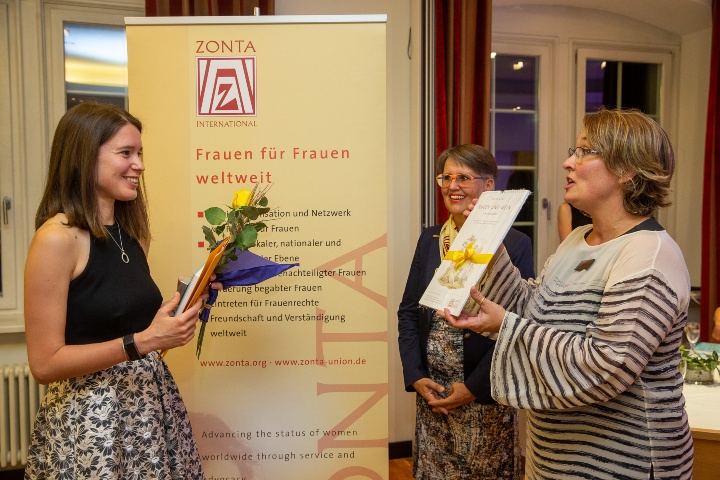The three doctoral researchers Martina Baggio, Ariane Exle, and Karin Schlottke from the Faculty of Aerospace Engineering at the University of Stuttgart have won the Amelia Earhart Fellowship Award, which is valued at USD 10,000 each. The prize is awarded by Zonta International. Zonta honors young female scientists who, like Amelia Earhart, made pioneering achievements in aerospace technology.
Ms. Baggio, what are you researching for your doctoral thesis?
Martina Baggio (MB): The topic of my research is the direct numerical simulation (DNS) of droplet impact on superhydrophobic, structured surfaces. At the Institute of Aerospace Thermodynamics (ITLR), we have our in-house code for the DNS of multiphase flows: Free Surface 3D (FS3D). One of my tasks was to extend FS3D in order to compute the interaction of a multiphase system with a complex, structured surface. FS3D is based on a Cartesian, rectangular grid and the adaptation of such grids on complex geometries is anything but trivial. I developed a method for this and performed simulations of droplet impact on superhydrophobic surfaces of different shapes. Comparison with various cases from the literature has shown that the method can reproduce the phenomenon very well.
Can you give an example of how your research is applied and will be applied in the future?
MB: Droplet impact is a common phenomenon in aerospace engineering. In flight, for example, supercooled water droplets collide with the wings of the aircraft. It’s very important that these droplets don’t freeze, otherwise the resulting ice would affect the aerodynamics of the wing. One possible solution is to use superhydrophobic coatings. It is known that the contact time of a droplet impacting a smooth superhydrophobic surface cannot be reduced below a certain threshold. It has now been shown that the application of small structures, such as ribs or wires, can lead to a further minimization of the contact time, since the hydrodynamics of the impact is changed. Numerical simulations help to understand these phenomena because they provide data that are very difficult to measure experimentally.
What will you be using the award money for?
MB: The award of the Amelia Earhart Fellowship was an honor and an unexpected event for me. Therefore, I would like to spend the money accordingly. My plan is to invest in my further education. For example, I would like to improve my IT and programming skills.
You received an award that was established in honor of Amelia Earhart. Did you know the famous pilot before your application?
MB: Before I applied, I knew that Amelia Earhart was a famous pilot, but otherwise I didn't know much about her life. When I heard about the scholarship, I became interested in Amelia’s biography. I appreciate her courage and commitment. She was a woman of action. Her adventures in flying were certainly impressive, but, above all, I find her very important as a role model, because she fought against gender stereotypes. She showed that gender doesn’t have to be a limitation of one’s wishes. I think it’s thanks to women like Amelia that the situation of women in the fields of technology, engineering, and science has improved so much today.
What is your professional goal for the future?
MB: To be honest, I don’t know exactly what my future profession will look like. It will depend on what opportunities arise. Ideally, I’d like to have a profession where I can be creative and acquire new knowledge. I think that many professions meet these criteria if you have the right attitude. I’d love to continue working in software development. It may sound a bit exaggerated, but I believe that programming is a kind of art.



